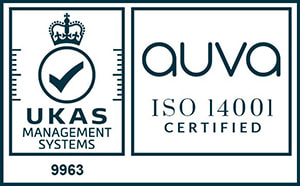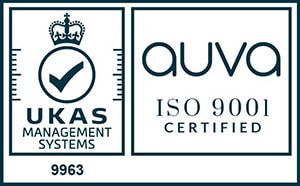
University of St. Andrews
Going Dutch!
The University of St Andrews is well known for its many famous alumni. Lesser known, but equally impressive is the fact that it was one of the first universities to allow women to study there; it boasts some of the finest examples of medieval architecture in Scotland; it is home to one of the UK’s most cosmopolitan academic communities, with students and staff coming from over 120 countries, and it is the only University with a £1.6 million Salix Fund to invest in energy saving measures.
It comes as no surprise then that the University takes its environmental responsibilities very seriously and has an energy strategy in place to help it become carbon neutral by 2016. It has already invested in a range of macro and micro initiatives to do this, including: planning permission for 6 x 2MW wind turbines on the University Farm at Kenly and a 6.5MW biomass district heating scheme; both schemes are estimated to save a total of 29,000 tonnes of carbon a year. On a smaller scale, a ground source heat pump is installed at the University Museum (MUSA) which saves 4 tonnes of carbon a year and a series of solar thermal panels on new apartment blocks saves 10 tonnes of carbon a year. And all new build, from 2010 on, are designed to at least BREEAM Excellent standards to ensure that the infrastructure meets the highest green standards and has the facility to adapt and cope with climate change.
With some of the older buildings, like many of the University’s halls of residence, some of which date back to the 1970s and 1980s, it was imperative to find a retrofit solution that would lower costs and improve efficiency while reducing its lifetime impact on the environment. David Stutchfield, Energy Officer at the University, and his team have committed to improve the smaller scale boilers as well. After researching the market it was decided to run a trial using Dutch manufacturer Intergas’s HRE range of Combi Compact high efficiency condensing boilers. Up to £50,000 will now be invested in installing these across the residential estate.
Reduced cost of ownership
Stutchfield says the selection of the Intergas brand, which is still regarded as a relative newcomer in the UK, was made because of its robust construction and simplicity of design. It has only 12 components, including four moving parts; its unique two-in-one heat exchanger eliminates the need for a diverter valve, valve motor, secondary hot water plate heat exchanger and automatic air vent, so there’s far less to go wrong. And, as the same parts can be used for all boilers in the Intergas range, less spares need to be stored, which further reduces the cost of ownership.
Commenting on the choice of Intergas, Stutchfield said: “Reliability is a key factor in everything the University does. I look after a large estate with a limited workforce, so anything that cuts back on possible breakdowns is a bonus and our initial trial demonstrated that these boilers are more reliable than most.”
The Energy Team has replaced 30 older G-rated boilers with the Intergas HRE models and all domestic boilers will eventually be replaced by HREs as they become redundant. 26 boilers have been installed in 26 flats and two boilers have been installed in two blocks of five flats. To date an annual gas reduction of 38% has been realised where there are two boilers serving a block of five flats, a saving £1,572 a year on each pair of boilers and a carbon reduction of 5.9 tonnes. The savings where there is a single boiler serving a flat are slightly less at 22%.
Payback in under four years
As Intergas boilers are replacing older, non-condensing boilers they are going to be very efficient in comparison, but how does this Dutch brand compare with other condensing combis? Stutchfield says: “They’re simpler to install, simpler to use, there are less spares to keep, better controls and higher operational efficiencies. In fact five of the estate’s staff are also enjoying the benefits as they’ve now replaced their own boilers at home with the HRE.” Stutchfield says that payback will be achieved in just over three-and-a-half years.
Remote monitoring
This month the Energy Team is installing eight Intergas ECO RF boilers in properties on the estate. Launched in 2014, the ECO RF is the latest and greenest Intergas boiler. There are three models in the range: ECO RF 24, ECO RF 30 and ECO RF 36 and flexibility is designed-in; by changing the parameter settings the combination boiler can be converted to a heat only, sealed system or open vent, making the ECO RF future proof too. It retains all the features and benefits of the HRE but new vacuum insulation reduces heat and energy losses to the minimum and ensures whisper-quiet operation; it has an A-rated high-efficiency pump making it 2015-compliant ahead of new legislation coming into force in September, but it is the remote monitoring facility which sets this boiler apart from the rest. Every ECO RF boiler comes fitted with an RF module as standard. Installed in the boiler management system, this module holds software which can send and receive information wirelessly from the boiler to the Energy Team on a continuous basis. Should a fault occur then the Team will receive an email and, as the fault has been clearly identified, this helps to ensure a first-time fix. All aspects of boiler performance can be monitored, from gas usage to managing heating and hot water requirements, and up to 240 boilers can be linked together to form a network and communication is via a single Internet connection. Currently the Team can monitor all academic buildings and larger halls of residence through its own energy management systems, but remote monitoring of smaller properties will enable engineers to respond more effectively and reduce after-hours call outs.
Commenting on the relationship with the University of St Andrews, Stephen Zouch, managing director, Intergas Heating, said: “Working with such a forward-looking team has been a rewarding experience for us. We have very similar goals and are equally as ambitious about energy efficiency and making products for the future, while keeping lifetime costs as low as possible.”






